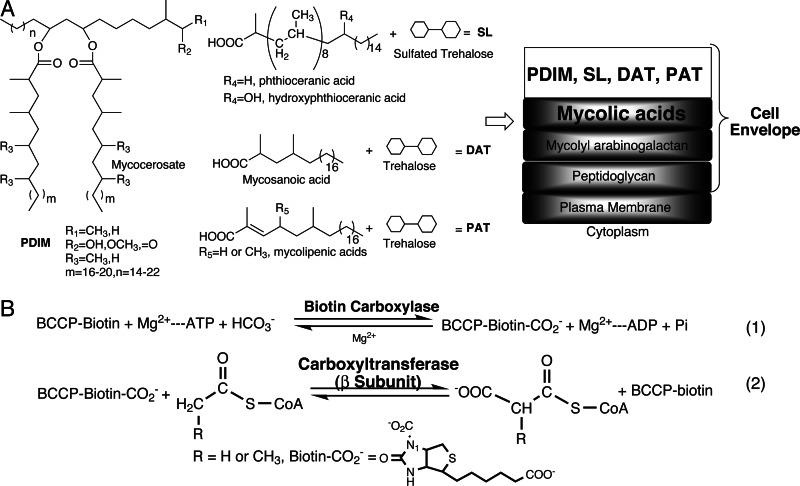Fig. 1.
Chemical structures of cell wall fatty acids and ACCase mechanism. (A) The chemical structures of mycolic acids and multimethyl-branched fatty acids such as mycocerosic, phthioceranic, hydroxyphthioceranic, mycosanoic, and mycolipenic acids, which form liposugars phthiocerol dimycocerosate (PDIM), sulfated tetraacyl trehalose (SL1), diacyl trehaloses (DAT1), triacyl trehalose (TAT), and pentaacyl trehalose (PAT), respectively. A proposed cell envelope architecture is shown, adopted from ref. 10. (B) Acyl-CoA carboxylase (ACCase) provides the extender units for the biosyntheses of cell envelope fatty acids. The α [biotin carboxylase (BC) and biotin carboxylate carrier protein (BCCP)] and β [carboxyltransferase (CT)] subunits catalyze the first and second steps, respectively. The β subunit is the key domain that determines the ACCase substrate specificity. In M. tuberculosis, there are six β subunits, AccD1–6, whose biological roles are not well defined.

